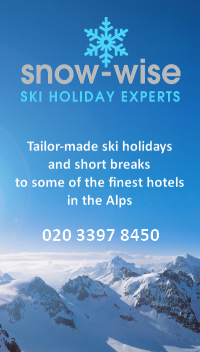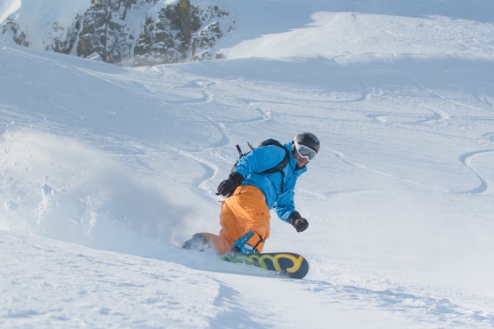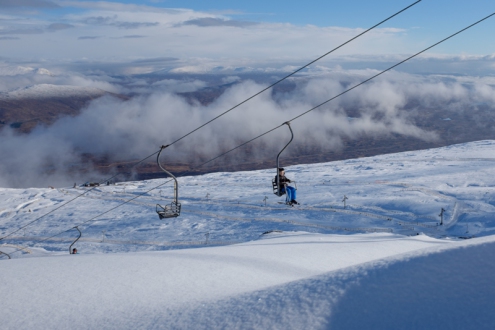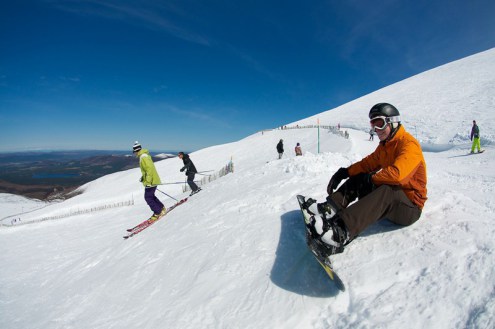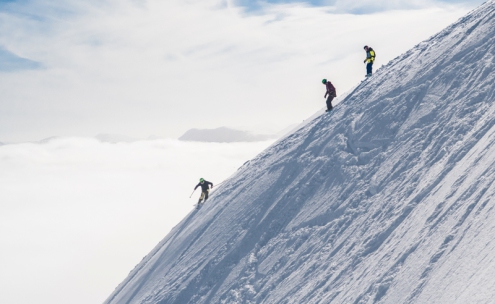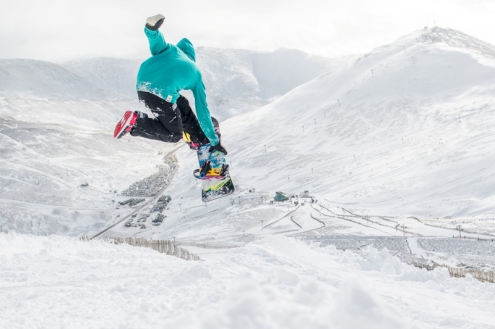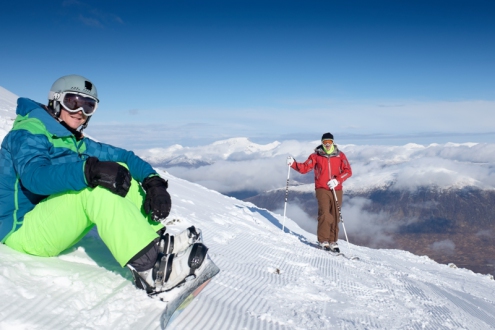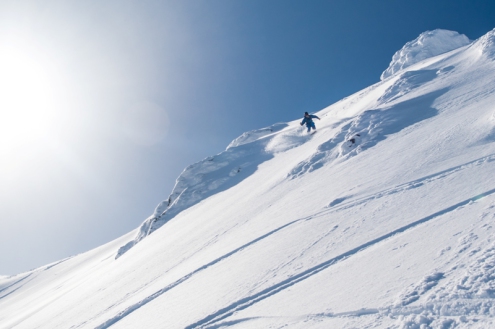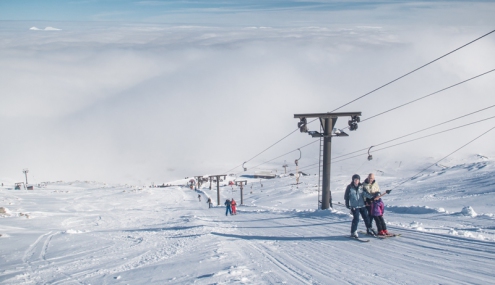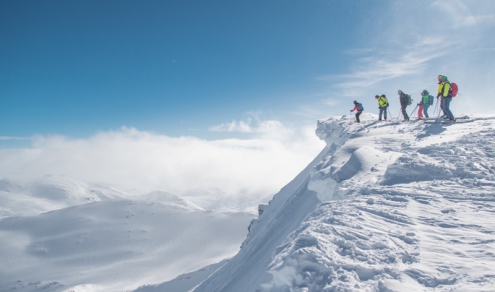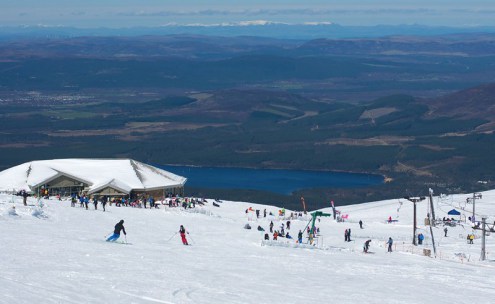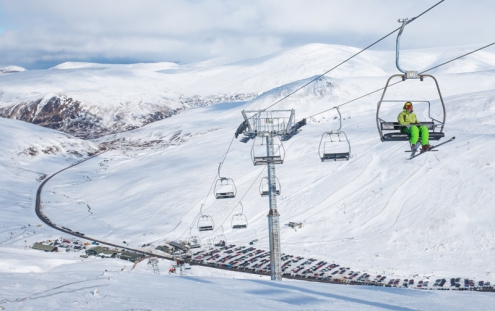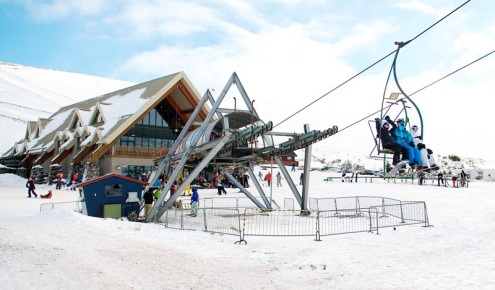The complete guide to...
Weather and snow conditions in Scotland
by Fraser Wilkin, 24 November 2020
With continuing restrictions on travel within Europe due to Covid-19, skiers may be starting to think about where they might be able to ski closer to home. For those based in the UK, although there are a handful of “ski fields” in England, for all intents and purposes this will mean skiing in Scotland.
Most readers will never have skied in Scotland before, perhaps put off by its reputation for wild weather and erratic snow conditions. But while this reputation is largely justified, give it a try and you are unlikely to regret it, especially if you go in with realistic expectations and an open mind.
Skiing in Scotland may be more rough and ready than in the Alps or the Rockies, but it is certainly a unique experience and, with a bit of luck (or meticulous preparation), you may just have the time of your life.
To help you better understand what nature might try and throw at you, here is our complete guide to weather and snow conditions in Scotland...
Where are Scotland's ski resorts?
Skiing in Scotland is somewhat different to skiing in the Alps, as its ski destinations do not have definitive village bases like their Alpine counterparts, and as such are often referred to as "ski areas" rather than "ski resorts".
The country has five main ski areas and one “Ski Field”. In the Western Highlands are Glencoe and Nevis Range, both of which offer about 20km of pistes. Further east, in the Grampians, are Cairngorm (with 30km of pistes), Glenshee (Scotland’s largest ski area with 40km of pistes) and the Lecht (with 18km of pistes). In the Southern Uplands, Lowther Hills (Scotland’s only “ski field”) is a members’ only ski club with a single intermediate run and separate beginners’ area in a nearby village.
Of Scotland’s main ski areas, Glencoe and Nevis Range are the best for advanced skiers, though they do offer runs for all abilities. Cairngorm and Glenshee are best for intermediates, though they also have runs for all abilities. Lecht is somewhat tamer and best for beginners and early intermediates, with limited scope for more advanced skiers.
You'll find more information about Scotland's five main ski areas at the bottom of this page.
What weather and snow conditions can you expect in Scotland?
Get lucky with the weather and skiing in Scotland can be one of the most memorable and rewarding experiences you will ever have on snow. However, Scottish ski resorts do have some of the most volatile weather and snow conditions in the world, so skiing in Scotland is not for the faint-hearted. Ski holidays in Scotland are not something that people tend to book up very far in advance!
That said, snow conditions can be superb in the Scottish ski areas, though they (and the weather) can also change in the blink of an eye. So if you’re considering a ski trip to Scotland, you will need to adopt an open and flexible mindset!
Why are weather and snow conditions in Scotland so volatile?
The reason why Scottish weather and snow conditions are so volatile is that, aside from Iceland, no other country is more exposed to the Atlantic Jet Stream - a conveyor belt of high-level winds that determines the trajectory of storms moving from west to east towards Europe. In winter, this usually sits close to Scotland, meaning that the country often feels the full force of Atlantic storms, especially in the west (which includes Glencoe and Nevis Range).
This level of exposure to Atlantic storms means that Scotland is subject to constantly changing air masses. Indeed, it is not uncommon for the country to be under an airmass of polar origin, followed by an airmass of subtropical origin, followed by another airmass of polar origin, all within the same 24 hour period!
Weather and snow conditions in Scottish ski resorts are (unsurprisingly) therefore incredibly variable, with rain, sleet, hail, snow and sun all possible on the same day!
The biggest challenge facing Scottish ski areas though is the wind - due to the constant conveyor belt of depressions moving in off the Atlantic (or even the North Sea on occasion). This is the reason why you will often see fences along the sides of the pistes in Scotland - they are there to 'collect' snow and stop it blowing off the mountain.
Unpredictable weather and snow conditions have to be considered as part of the Scottish ski experience. That said, the weather is capable of behaving itself at times! If you get lucky you can experience days (or even weeks) on end of near perfect snow and weather, as anyone skiing in Scotland in arguably its best ever winter of 2009-10 will remember.
Which Scottish ski areas have the best snow records?
Of the five Scottish ski areas, Glencoe, Nevis Range and Cairngorm are generally considered to be more reliable for snow than Glenshee and the Lecht.
The furthest west of the ski areas, Glencoe and Nevis Range, are the most exposed to Atlantic storms and can get prodigious amounts of snow, but they also suffer more from wind, rain and sudden changes in temperature than the other resorts further east. That said, both Glencoe and Nevis Range can build formidable bases - in some seasons exceeding 3m - which can allow skiing well into spring.
Indeed, skiing has been possible in Glencoe as late as June - something that has also been possible in Cairngorm, but would never be possible in either Glenshee or the Lecht, where skiing never extends beyond April, even in bumper years.
Cairngorm’s climate differs slightly from that of Glencoe and Nevis Range, thanks to its location in the centre of Scotland where it is afforded slightly more shelter from the worst excesses of mild subtropical Atlantic air. The average snowfall in Cairngorm (height for height) is slightly lower than in Scotland’s western ski areas, though this is counterbalanced by fractionally better snow preservation.
Glenshee is located in the south-eastern Grampians and gets considerably less natural snow than Cairngorm, Glencoe or Nevis Range. It can get a lot of snow when the wind is coming from the east, but snow conditions are generally less reliable than in its main rivals.
The eastern Grampian resort of The Lecht is the lowest of the main Scottish ski areas, and is also less reliable for snow than Cairngorm, Glencoe or Nevis Range. Snow reliability here is more on a par with Glenshee, although the Lecht is much the smaller ski area.
Although Glenshee and The Lecht don't get as much snowfall as their western counterparts, they do both benefit from a slightly lower chance of weather disruption (specifically from the wind) thanks to their more easterly location, as it affords them a little more shelter from prevailing westerly winds.
All of Scotland's five main ski areas offer artificial snow-making, to a greater or lesser extent. Given that traditional snow-making has become increasingly difficult in recent years due to rising temperatures (as a consequence of climate change), all of the Scottish ski areas (bar Glenshee) have invested in "smart snow-making", which allows snow to be produced at almost any temperature. These has been particularly important in facilitating beginner skiing, and other snowsports (e.g. sledging), at lower altitudes.
Lowther Hills is located in the Southern Uplands in the south-west of Scotland and is even more hit and miss for snow than Scotland's main five ski areas.
What is the best time of year to ski in Scotland?
As Scottish weather and snow conditions are volatile, it is always best to approach potential ski trips to Scotland reactively rather than proactively.
Statistically, the most likely time to find good snow cover is in February or early March, however every year is different, and conditions can change (for better or for worse) very quickly.
In some years it has been possible to ski in Scotland as early as November, but in others there has been virtually no skiing possible until late February! Promising-looking snow conditions in Scotland can also disappear virtually overnight, but bare slopes can equally transform into deep top to bottom cover in just a couple of days!
So, when it comes to timing your ski trip to Scotland, our advice would be to wait until you know that there is good snow, or (even better) is good snow and good weather, and then make your move! This might not always be easy of course, especially if you don’t live close to the Scottish mountains, but it is the only way to guarantee some good action on the slopes.
If weather and snow conditions are favourable, you also need to factor in how busy the ski areas might be, as a lot of locals will likely be hitting the slopes, particularly at weekends. For this reason, you might like to consider skiing in Scotland during the week when the slopes will be much quieter.
Always check with the ski area in question before setting off though, as not all of them operate on a daily basis!
Can you find powder in Scotland?
The short answer is yes! There can be some amazing off-piste powder in Scotland, but windows of opportunity tend to be short and it is imperative that you take a good local guide.
The Scottish mountains may not be high but, off the beaten track, the risk of avalanche is very real, particularly (but not exclusively) in Glencoe, Nevis Range and Cairngorm. Getting lost is another off-piste hazard, especially as the weather can change very quickly.
Scotland's five main ski areas:
Glencoe
|
Skiing range: |
360-1070m |
|
|
No. of lifts: |
8 |
|
|
No. of runs: |
20 |
|
|
Pistes (km): |
24km |
|
Established in 1956, Glencoe is not only Scotland’s oldest ski area but with its rugged terrain and spectacular scenery is perhaps also its most iconic.
Located in the Western Highlands, 16 miles south of Fort William, the main ski area is accessed via a chairlift from a car park off the A82. This leads to the 'Plateau', where you will find some extensive beginner terrain, a café and a designated sledging park. Above the Plateau is a network of more intermediate and advanced pistes including the infamous 'Flypaper', Scotland’s steepest ski run.
When conditions are good, Glencoe offers Scotland’s longest runs, and its biggest vertical, 710m from the top of the ski area all the way down to the car park.
Accommodation is available in micro-lodges at the base of the ski area. The nearest hotel, Kings House Hotel, is 2km away. Glencoe also has its own snowsports school and ski hire shop.
Further information: www.glencoemountain.co.uk
Nevis Range
|
Skiing range: |
655-1221m |
|
|
No. of lifts: |
12 |
|
|
No. of runs: |
35 |
|
|
Pistes (km): |
20km |
|
Scotland’s highest ski area, Nevis Range, is in the Western Highlands, just a 15-minute drive from Fort William. It sits adjacent to Ben Nevis, Britain’s highest mountain.
The ski area is accessed by the UK’s only gondola lift, which arrives at a plateau where you will find a café and plenty of facilities for beginners. Further up the mountain, intermediate skiers are well served by a selection of blues and reds, but the area’s big draw is the “Back Corries”, a series of off-piste itineraries which are marked and sometimes avalanche controlled, but never groomed. Although the Corries are loosely patrolled, they should be treated as a proper off-piste experience with all the requisite precautions, as there is no formal sweep of the area at the end of the day.
Although there is no lodging at the base of the ski area, there are lots of hotels and guest houses in Fort William, just 10km away. Nevis Range also has its own snowsports school and ski hire shop.
Further information: www.nevisrange.co.uk
Cairngorm
|
Skiing range: |
645-1145m |
|
|
No. of lifts: |
12 |
|
|
No. of runs: |
32 |
|
|
Pistes (km): |
30km |
|
Cairngorm is in the northern Grampians, about 10 miles from Aviemore, and is probably Scotland’s best known and most popular ski area.
Novice skiers are well catered for with designated beginner areas both at the base and summit of the ski area, with a long top to bottom green to progress to. There is also plenty to interest intermediate and advanced skiers, with most of the steeper terrain on the eastern side of the ski area. There is also scope for some decent off-piste when snow conditions allow.
A wide range of accommodation is available both in the Cairngorms national park and in nearby Aviemore. Cairngorm has three local ski schools (Ski Norwest, Free-Ski and SOS) and an on-site ski hire shop.
Further information: www.cairngormmountain.co.uk
Glenshee
|
Skiing range: |
650-1068m |
|
|
No. of lifts: |
22 |
|
|
No. of runs: |
26 |
|
|
Pistes (km): |
40km |
|
Located in the south-eastern Grampians, Glenshee is Scotland’s largest ski area, with 40km of runs spread over its three valleys and four mountains.
Although it is best suited to intermediates, beginners are well catered for with nursery slopes at car park level and some longer greens to progress to. There are also two challenging blacks and some good off-piste in the higher bowls when snow conditions allow.
Glenshee does not have any on-site accommodation but there are plenty of options a short drive away, including some 9 miles away in the nearby town of Braemar. Glenshee has two ski schools (Glenshee Ski & Board and Fresh Tracks) and an on-site ski hire shop.
Further information: www.ski-glenshee.co.uk
The Lecht
|
Skiing range: |
600-800m |
|
|
No. of lifts: |
14 |
|
|
No. of runs: |
20 |
|
|
Pistes (km): |
18km |
|
The Lecht ski area straddles the A939 in the eastern Grampians between the villages of Tomintoul and Cockbridge. It is the smallest and lowest of the Scottish ski areas, and is best suited to beginners, intermediates and families.
The ski area has an on-site café, ski hire shop and snowsports school. There is no accommodation on-site accommodation, but options are available a short drive away, including some in Tomintoul. There is no public transport.
Further information: www.lecht.co.uk
If you enjoy reading our content - please feel free to support us:


